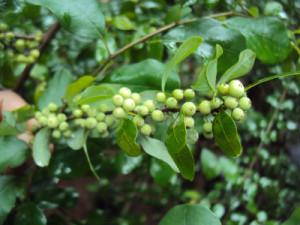Lung cancer is caused by abnormal growth of cells and these cancer cells disturb the functioning of body parts. Ayurveda for lung cancer helps in preventing the spread of cancer. Commiphora Mukul herb is called Guggul in Hindi and Guggulu in Sanskrit. It is an important herb for treatment of cancer. The plant has been used in traditional Ayurvedic medicines for centuries in treatment of various diseases. In addition to helping in treating lung cancer, it is also used as an expectorant, and also as a uterine stimulant.
Commiphora Mukul
Guggal has been used in traditional Ayurvedic medicines for many years. It is the dry gum resin obtained from the bark of the tree. It is secreted by a small, thorny mukul tree called as commiphora mukul. The gum resin is excreted by bark which is called as guggal. The shrub is about the height of 4 meters and the bark is thin with thorny branches. Guggul is among the best natural lung cancer treatment in Ayurveda. It helps to prevent respiratory symptoms and provides energy to the body cells.
Dosage
The dosage depends on the type, severity of cancer, general health problems, and more. Usually, 75 to 150mg of guggul is given. You should consult your Ayurvedic practitioner before starting taking it. Depending on your particular health problems, the dosage is recommended.
Side Effects
The herb is safe to use but can cause side effects such as headaches, nausea, diarrhea, hiccups, vomiting etc. It can also cause allergic reactions and skin rashes. It may slow blood clotting. The moderate to severe generalized skin reactions have been reported with intake of guggal. There are certain precautions to be followed when taking Guggal. It should not be taken during pregnancy and during breast-feeding.
All information provided in this blog is for educational purposes only. You should always consult your health practitioner before starting any medicine.
Do you think Ayurveda for lung cancer can go a long way in its treatment? Let us know your views in the comments.
All information shared in this blog is for educational purposes only. Please concern any specialist before starting any treatment.
| Image courtesy of Vinayaraj (Own work) [CC BY-SA 3.0], via Wikimedia Commons |

